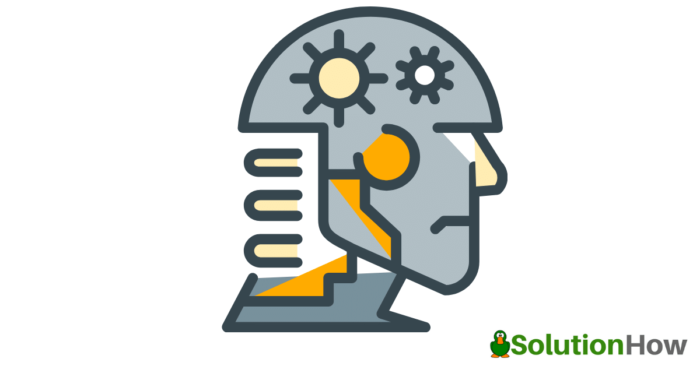
Machine Learning vs. Artificial Intelligence
The whole world is currently under lock-down due to the COVID-19 pandemic. Schools, colleges, and even offices have been shut down to avoid further spread of the virus. If you ever wanted to up-skill yourself with some new technologies or want to know more about them, this is the best time.
Say Machine Learning (ML) and Artificial Intelligence (AI) is one of the skills or technologies you want to explore, then you are in the right place. There are many AI and Machine Learning courses available on the world wide web provided by several online training institutes. Unlike most of them, we’ll go through ML and AI’s basics in most layman terms. We will also go through several differences between the two in the summary section. Without further ado, let’s begin.
Artificial Intelligence (AI):
If you have watched any of the Iron-Man movies or are using a reasonably modern smartphone, you must have probably heard of Artificial Intelligence (AI). To give you a refresher, JARVIS in Iron-Man movies is an AI. Also, Google Assistant in your Android device or Siri in your Apple device, which all of us know, is the best example we can think about Artificial Intelligence. However, Artificial Intelligence is much more than your assistant.
Let us go through the definition actually to understand what is Artificial Intelligence:
“Computer science defines Artificial Intelligence research as the learning of “intelligent agents“: any device that adapts with its environment and takes necessary actions that maximize its chance of successfully achieving its goals. A more detailed definition describes AI as “a system’s ability to correctly understand the data derived from the external agents, learn from such data, and use those learnings to achieve specific goals and tasks through flexible adaptation.”
In layman’s terms, AI is an artificially created system that tries to mimic human behavior and actions, especially while solving complex problems like the classification of cats & dogs based on images, face recognition, medical drug research, music creation, etc.
Most AI and Machine Learning courses don’t introduce us to the following three types of learning AI systems:
- Narrow AI (Weak AI): Currently, all the hype and AI applications are here. It’s an Artificial Intelligence system that can perform a specific task the same as or better than humans do. It is generally not capable of experiencing consciousness. Eg., Face Detectors in social media, Object and shape recognition, AI in games, etc.
- General AI (Strong AI): It’s an AI system that has reached a general state where it can drive any intellectual task with the same accuracy level as that of humans. It is capable of experiencing consciousness.
- Super AI (Theoretical AI): It’s an AI system that surpasses human intelligence in all aspects. It can even beat the brightest human. Most people are worried about this type of AI. Famous faces like Elon Musk feel these AI systems will likely lead to human extinction.
To summarize the AI part:
It’s a broad area of computer science that enables machines to have human-like intelligence. Most of the AI work is currently done in the “Narrow AI” category. We are far from creating General or Super AI.
Machine Learning (ML):
If you are following recent announcements from any major tech giant, you would have heard this term. Like Microsoft recently announced their work on improved “FIND” feature in MS-Word, which now uses ML to find intended words even if you made a typo in the Find text-box (“Ctrl + F”).
Let us go through the definition first:
“Machine learning is a detailed study of computer algorithms that adjust automatically through experience.“
It is a section of AI. It enables systems to automatically learn and improve from its experience, without being explicitly programmed. It happens because ML relies on a sophisticated set of algorithms as well as structured and cleaned data with labels (mostly). ML systems try to learn relations between the features (columns or attributes or essential pieces of data) of the data. The data is provided to the ML model by you.
The basic understanding is to use the essential features and their relationship with the label to derive the task’s solution. By learning relation, it identifies patterns, inherent nature of the data, and how their values affect the name. Based on what it has understood from parsing the data, it makes informed decisions using various algorithms. The model is trained on the data used in training, validated for performance and accuracy on validation data, and tested on the test data.
ML systems, unlike traditional methods, don’t need explicitly coded logic for the solution. For instance, instead of programmer hard-coding the formula/thesis for prediction of sales, the model itself learns the philosophy based on patterns and relations it absorbs during the training phase. There are three types of ML Algorithms:
- Supervised Learning: Here, the training data consists of labels. It acts as a supervisor for the ML model. Hence, named Supervised Learning. Eg., Linear Regression, Decision Trees, etc.
- Unsupervised Learning: Here, the training data doesn’t have any labels. Instead, the ML model finds patterns and extracts useful features by itself based on the data. It’s called Unsupervised Learning, as there’s no supervisor. They are commonly used for clustering—Eg., K-Means Clustering, Association, etc.
- Reinforcement Learning: Most AI and Machine Learning courses don’t tell much about this type. The key idea is to reward the agent for performing correct actions. Also, penalize them for every incorrect step. Follow the trial and error approach, just like games, for example, Q-Learning.
A typical application of ML includes – Sales predictions, Forecasting, Fraud detection, etc.
Summary of AI vs. ML
AI
- It mimics human intelligence or behavior
- A broader term
- It is still a field of research.
- It is currently implemented in several sectors and product development.
ML
- It is a technique that enables a computer to learn from the existing data.
- Most of the ML applications are already in use in several sectors and product development.
Thus, while selecting any AI and Machine Learning courses, check whether all these sections are covered.




You must be logged in to post a comment.